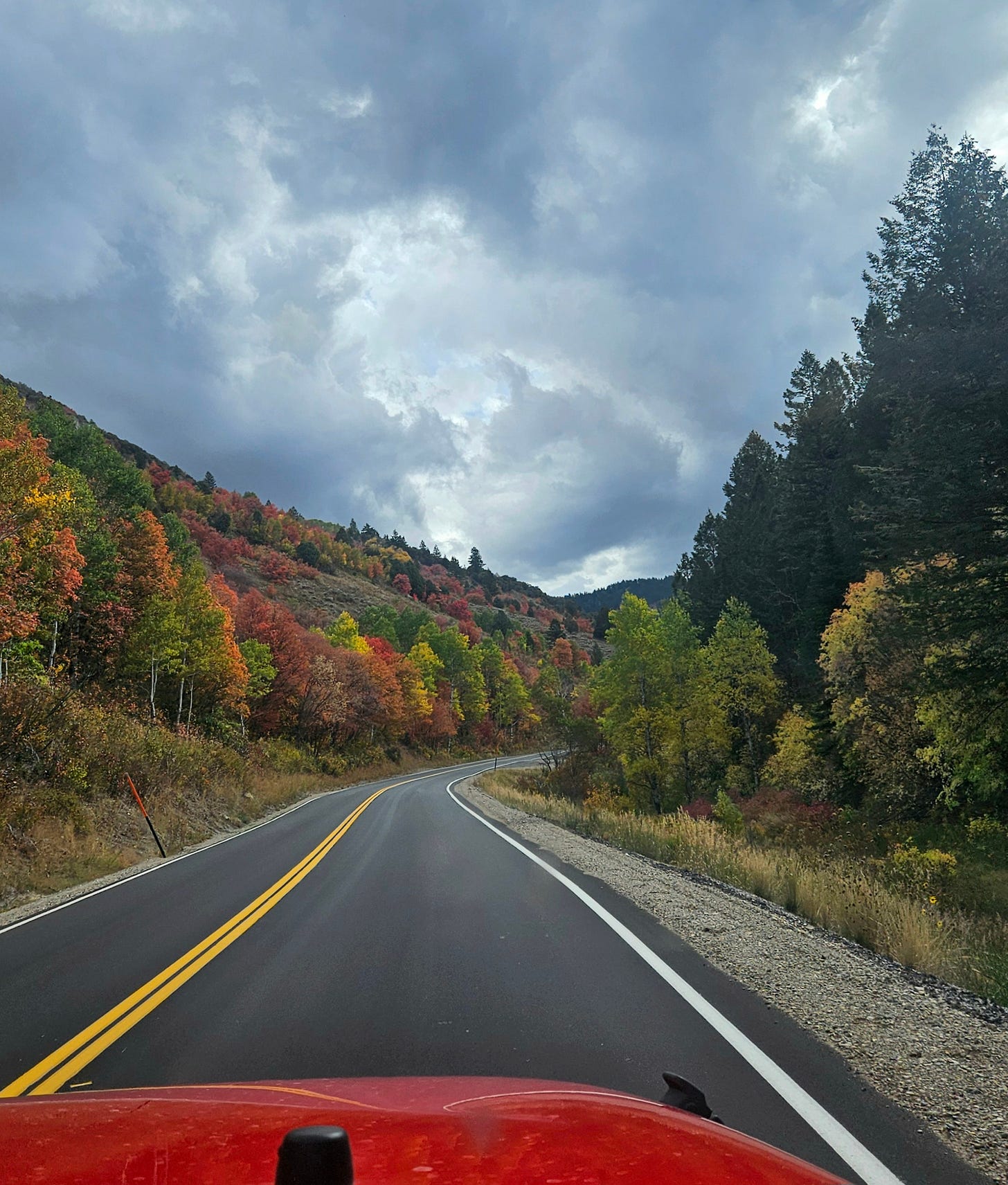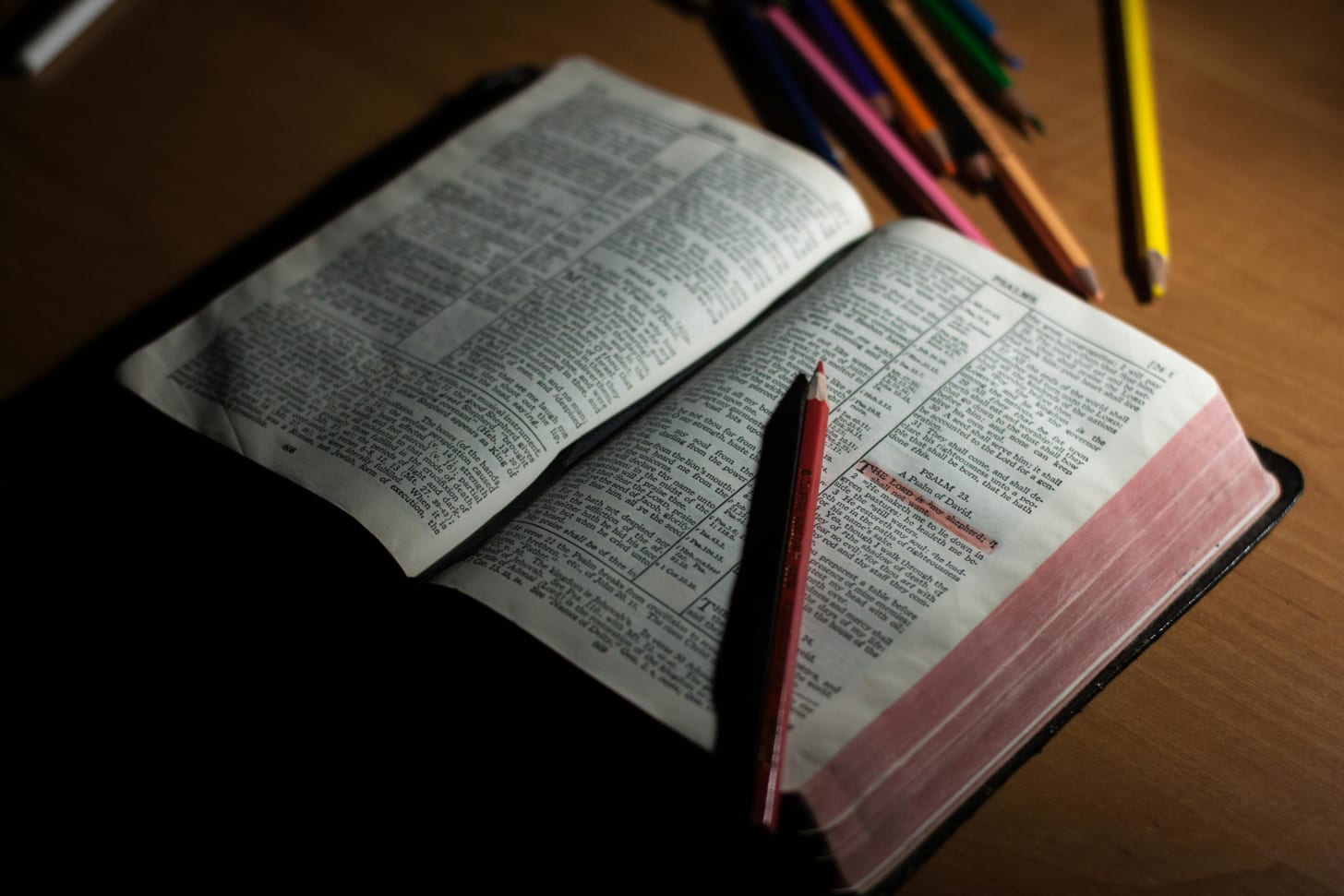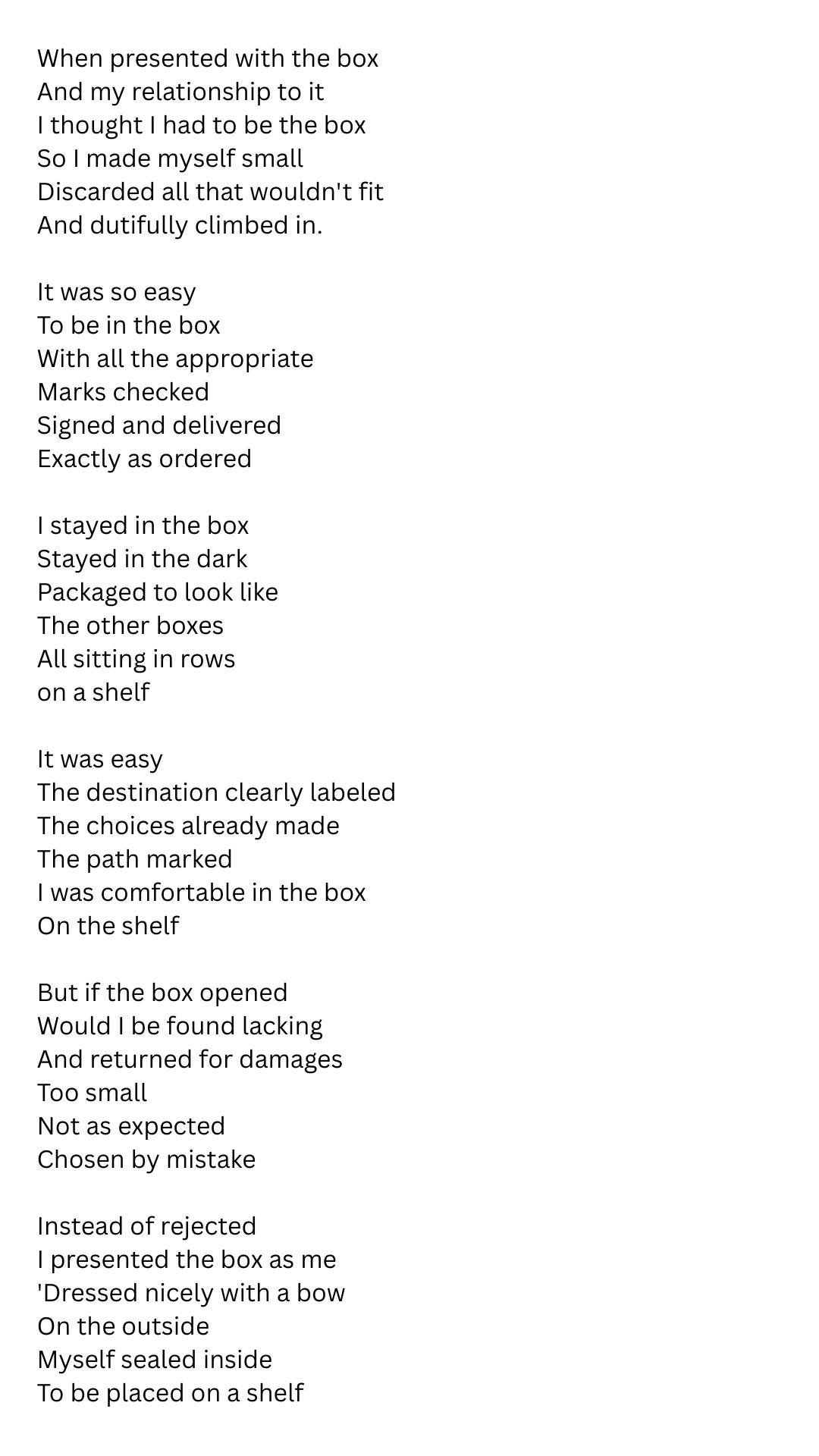Behold Thy Mother: The Sacred Pattern of Women Who Create
by Sheryl Rose
This week I’ve been sitting with the weight of lived experiences,
theology, and even the paradoxes of agency and sacrifice. I’ve been thinking of a dear friend who confided in me the pain that she experiences when thinking about her patriarchal blessing. Her blessing promised her a joyful and happy marriage, yet in reality it has been one of the most sorrowful parts of her life. Still, she has chosen to stay because she knows it’s the right thing for her children. In many ways, she has chosen her family over her own ease or comfort. She described a moment to me in which she felt she had to choose either promised personal blessings or the happiness of her children. To grab hold of one felt like letting go of the other. She ultimately chose her family and ripped to shreds that sacred personal document.
As I’ve sat with that tension this week, I’ve been thinking about Eve and Mary, two women who mark the great thresholds of the human story. They stand at opposite ends of scripture, but mirror each other in courage, wisdom, and surrender. Both chose to bear the weight of love, knowing it would break their hearts wide open.
For women, especially in our faith tradition, the language of sacrifice can sometimes feel heavy. Many of us already feel the relentless pull to give and then give some more. I don’t share these thoughts to add to that impulse or to say that pain itself is holy. Instead, I want to name the holiness already present in the sacrifices women make—not because they are mothers, but because they embody the divine capacity for empathy, intercession, and creative love.
The commandment was given to Adam not to partake of the tree of Knowledge. Only after this did God create Eve as his help meet (Ezer Kenegdo). Eve’s choice to partake of the fruit was not a fall from grace, but a step toward growth. Her decision introduced mortality, knowledge, and the possibility of agency, all essential conditions to experience joy. The Hebrew word used to describe her role, ezer kenegdo, means “helper,” but not in the passive sense we sometimes assume. It means rescuer, protector, even savior. Eve saw beyond immediate obedience to the deeper work of God’s plan. She chose separation from paradise, willingly embracing suffering, so that humanity could experience life, learning, and love. Her act was the first great act of redemptive courage and was a deliberate descent for the sake of creation.
Adam’s role was to obey the command that was given. Eve’s role was to see that obedience alone was not enough, as it’s often not when we’re faced with an impossible choice. Somebody must embrace the cost. My friend is in good company as women throughout history have often carried out this same pattern: taking on suffering, limitation, or isolation so that others might have life and possibility.
Eve and Mary teach us that divine womanhood is not defined by roles, but by participation in love’s redemptive and creative work.
Centuries later, Mary stands at the other end of that story, also facing an impossible choice. When the angel announces the overshadowing of the Spirit, she replies, “Be it unto me according to thy word.” Like Eve, she consents to bear both life and suffering. Her “yes” opens the way for grace to enter mortality. Simeon’s prophecy pierces her heart: “yea, a sword shall pierce through thy own soul also.” And it does. She watches her Son suffer and can do nothing but remain present, faithful, and compassionate.
When Christ, her fruit, hangs upon the cross, His words to the beloved disciple, “Behold thy mother,” ripple outward through time. They are not only an act of care for Mary; they are a revelation. Christ invites all of humanity to behold the archetype of divine compassion: to see in Mary the reflection of God’s mother-heart, the same nurturing spirit that hovered over the waters in Genesis. It is a call to every soul, male and female alike, to awaken to divine empathy, to participate in the redemptive love that binds heaven and earth.
In this light, Eve and Mary become mirrors of the same mystery. Through Eve, humanity descends into mortality; through Mary, divinity descends into mortality. Through Eve, we are born into the world of experience; through Mary, God is born into the world of humanity. Each chose to bear the cost of creation, knowing it leads through sorrow and the valley of the shadow of death towards the greater joy of reunion.
My friend’s decision to remain in her marriage, despite the ache of it, echoes this ancient pattern. She has chosen to stand within her own Gethsemane, allowing love to lead her rather than comfort. Her blessing is not nullified by her pain—it is being fulfilled in deeper, unseen ways. The joy she was promised may not come through her marriage alone, but through her children, her steadfastness, and the compassion being refined in her soul.
Eve and Mary teach us that divine womanhood is not defined by roles, but by participation in love’s redemptive and creative work. Through Eve’s fruit, we were born into knowledge and choice. Through Mary’s Fruit, we are reborn into grace and compassion. Through Eve’s sacrifice, we were born into mortality. And through Mary’s sacrifice we are reborn into immortality. Our mother Eve descended below all things to give us mortal life and the mother Mary, through her son Jesus Christ, descended below all to conquer death.
The patterns they set teach us that every act of empathy, every choice to remain faithful in the face of suffering, every willingness to see and to stay are all echoes of that same divine pattern. And through all who embody divine empathy, who choose love, who hold space for suffering, who bring life to others in countless forms, God’s creative work continues.
Too UN-Acquainted
by Brooke RaNae Palmer
A New Take on Martha and Mary
by Maria
Every churchgoing woman has some opinion about this story.
It’s one of very few scriptural stories that has two women interacting, although in this case they actually interact with Jesus as an intermediary. You have Mary, who is cast as the “wiser” sister in this story, and Martha, the grumpy overworked sister. I’ve heard countless times some version of how we all need to be like Mary, and while I agree on some level, it often doesn’t feel so good. So I was both interested and wary today when Pastor Jamie at First Presbyterian announced that the sermon topic would be Mary and Martha.
Martha represents the everywoman to me, the women in the background, the women that everyone takes for granted, the women that make everything happen. But no one ever seems to notice, appreciate, or offer to take on some of the tremendous mental and physical load she does to make everything happen in a way that looks so effortless and magical. Dinner is just always on the table. The laundry is just always done. School lunch is just always packed. The carpool is just always there on time. A meal for Jesus and His followers just always appears on the table at the right time.
Pastor Jamie pointed out that the house in the story is Martha’s house (Luke 10:38). It would not be called Martha’s house if she had a father, husband, or son. The odds are good that Martha was a widow, about the only way for a woman to have her own possessions in ancient Israel.
Pastor Jamie did a little breakdown of the language used in Luke 10:40-41. In verse 39, we learn that Martha had a sister named Mary who sat at Jesus’ feet, just like his male disciples. This was a man’s role, to be a disciple and sit at the feet of the rabbi. Not a woman’s. So Martha is a widow, taking on all the masculine tasks that her husband should have been doing and fighting tooth and nail to do it as a woman, but also still expected to do everything to run the household that a woman is normally expected to do. So here is Mary, getting to do the part of a man’s role that might actually feel good and fulfilling, and Martha, stuck doing all the less-fun aspects. Under those circumstances, I think it only makes sense that Martha is described this way:
“Martha was distracted by the many preparations that she was making.”
Pastor Jamie pointed out that the Greek work used for “distracted” here in the most original manuscripts we have is “periespato,” which translates to “deeply anxious, frazzled, or literally ‘to be ragged around.’”
Interestingly, the word that is used for the preparations that Martha was making is “Diakanos,” which translates directly to “deacon,” a church title.
Then, after Martha makes her plea to Jesus for some help, Jesus replies “Martha, Martha, you are anxious and trouble yourself about many things.”
Here, the Greek for “anxious” is “consumed, overwhelmed, or overtaken with anxiety.” And the word for “troubled” translates best to “disturbed, angry, or to cause an uproar or riot.”
Martha is pissed. Martha is tired. Martha feels used and unseen. Martha’s mental and emotional load has just hit its limit. She sees her sister sitting with Jesus like a male disciple might. She feels the incredible injustice of it all. She gets so emotionally overwhelmed that she acts out, not simply turning to her sister to ask for help, but looking to the most powerful person in the room to demand help.
Is it possible for Martha to break free from those chains like Mary did? Well, yes. But it is a huge and tremendous work for a woman who is used to being the underpinnings of so many other people’s lives.
Pastor Jamie this morning said that Jesus could see that Martha had lost the plot. She had gotten so buried in the mess of everything about her that she’s gotten stuck in the chains of a stressful life. Mary has found a way to get free of the chain, and Jesus is defending her right to be free of those chains. He wants Martha to be free of them as well.
What Pastor Jamie did not say, but what was firmly in my face, is that Martha was a victim of a patriarchal system that kept her in chains. Is it possible for Martha to break free from those chains like Mary did? Well, yes. But it is a huge and tremendous work for a woman who is used to being the underpinnings of so many other people’s lives. Including, I might add, that of Jesus, who was able to live as an itinerant preacher in large part because of the lives of people like Martha.
Martha also represents a very common archetype of the crazy, emotional woman who just lost it on everyone when everything was going just fine. This is also a common response to women who break under the pressures of a patriarchal system, and the victim blaming that keeps them down, and keeps other women from trying to speak up, lest they become an object lesson like that poor, crazy woman who just lost it over there.
The story in Luke ends with Jesus’ statement that “Mary has chosen the good part, and it will not be taken from her.” We don’t know what happened next. Did Jesus invite all his male followers to come take a little piece of Martha’s load so that the work was spread more equitably, and everyone could still have time to listen to Jesus’ teaching? Did Martha have a moment of transformation and decide that she was also going to sit and listen to Jesus, and everyone could eat half-cooked bread from a dusty table? Did Jesus himself stand to work alongside Martha? I have no idea. I hope at least one of those things happened. I wonder if the very first record of the Book of Luke might have had a more conclusive ending to this story. The earliest fragments we have of Luke date to the late 2nd or early 3rd century, and none of the earliest fragments match each other. So there were already variabilities added in by then. I’d love to know how this story was told orally before it was written down. What other details are we missing out on? Did Martha successfully transform her life? Was she able to achieve some sort of balance with Mary, without pulling Mary back into patriarchal expectations? I’ll never know in this life, but that’s what I want to envision for Martha.
In fact, here’s a fun way to close. Did you know that Martha acquired a rather incredible post-resurrection lore? In Medieval times, people believed that Martha traveled to France, and “encountered a dragon on a nearby beach. She faced a gruesome sight: a dragon that was described as a giant half-beast, half-fish with long, sharp teeth. When Martha happened upon the scene, the frightening monster was eating a man. Martha was undaunted. She sprinkled holy water upon the beast, confronted the demonic creature with the cross, and calmly tied it up. Martha performed additional miracles, interspersed with a preaching agenda similar to Mary Magdalene’s.” (Beth Allison Barr, The Making of Biblical Womanhood).
In this passage, I see a woman who has successfully thrown off the chains of patriarchy, and has released herself from the crab bucket. Martha, whoever you were in real life, I honor you for your strength and perseverance. I honor you for playing a difficult role in a world that wasn’t designed for you, and for asking for what you needed when you were overwhelmed.
The sermon on Mary and Martha from First Presbyterian
Additional reading sources:
On trivializing the “unnecessary” labor that women do: Just Do Less
On how women can appear to go crazy or lose it emotionally when no one expected it, and why it should have been expected: The Day I Went Crazy
Can I be the box?
by Amy
From a listener:
There are so many thoughts swimming in my head that I don’t even know where to begin. There’s this part of me that wishes to be held in your arms, embraced by two individuals who have so much love and compassion to give. I feel as though it would be extremely healing.
My name is Jessie Santa Maria Whittaker and I want to share my story with you. Like so many women, I was taught, or made to believe, that I wasn’t worth hearing. That my story wasn’t worth telling. Still, to this day, I am fearful of what other people will think if I speak up. I’m tired, and I feel alone, and I think that might be why I’m inclined to share because I don’t want to be tired or alone anymore.
Here are the most important things to know about me: I am 31 years old. I am working on my second grad degree, an MSW. I am half-Mexican. I grew up in a Mormon household, the oldest of eight children. I am pansexual, and lean towards being gender fluid, but I’m married to a cisgender heterosexual male. I have struggled with infertility and miscarriages, have no children of my own, but have been a guardian to my youngest sister for the last three years, and now find myself 19 weeks pregnant with a boy. I teach percussion. I love Bigfoot. My faith crisis really started last fall when for the first time ever I didn’t receive an answer to prayer/fasting weekend; not only was there no answer, I didn’t feel anything.
I have struggled with the church for years, for many reasons, but I believe that my faith crisis really started at the end of last summer. I had just had my fourth miscarriage and I wanted to know what my husband and I should do next, especially since earlier that year, in January, we had felt prompted that our family was about to get bigger. I wanted a clear answer from God about what to do in regards to growing our family...and I didn’t get one...and I was angry. For years I had been trying to live the good “Mormon” life, I did what was asked of me, I held callings, I forced myself to go to the temple, I tried to pay tithing, I read my scriptures, and listened to conference, I believed that if I did “X,” then God would give me “Y.” And when it didn’t magically happen after our family fast last summer, or rather an answer didn’t come about how our family was going to get bigger, I was so angry and hurt. I was mad at an organization that made me expect certain things. I was mad at a patriarchal God. I thought I was being punished because I wasn’t playing the perfect Mormon woman, so I stopped going to church (which was easy, considering it was home church at the time). Since this experience I’ve put some pretty strict boundaries in place for myself in regards to a church life.
I’ve stopped wearing my garments, I don’t go to church or the temple anymore, and I definitely don’t participate in my Relief Society because that’s where I feel the most alone and misunderstood.
Contributors:
Sheryl Rose
A bridge-builder at heart, Sheryl Rose finds meaning in connecting people, ideas, and faith. She is passionate about grace, truth, balance, and agency, and she seeks to live with purpose while helping others feel that they belong. Her work and study reflect a devotion to growth, peacemaking, and lasting impact.
Brooke RaNae Palmer
Brooke is a big thinker, voracious reader, stained glass enthusiast, and heavy metal headbanger, in addition to being a loving nana, mother of 4, happy farm wife and badass homemaker.
Maria
Amy
Thanks for supporting ALSSI! Have something to say? Join the conversation! Send us a voicemail, start a chat thread … or write a piece for a future Say More.
















Sheryl, you essay on Eve was so inspiring to me this week. I have been struggling with certain rules and decisions that have not been working for my family, and this essay helps me feel better potentially making the decision to tell our leaders that I understand that they need to obey but that this Eve needs to make a different decision for the wellbeing of my human family.
Some very relatable and thought provoking stuff here.